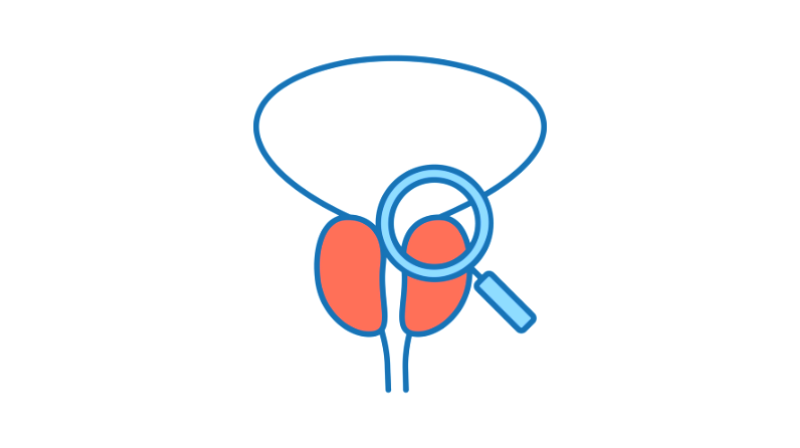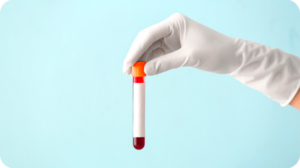A British study recently published in the New England Journal of Medicine supports the growing trend of men diagnosed with prostate cancer choosing active surveillance rather than treatment. The long-term study following the cases of 1,600 men found that those who opted for the active surveillance track lowered their risk of treatment complications without increasing their risk of dying from the disease (compared to a control group who underwent treatment).

Active surveillance—and a slightly less vigilant option known as “watchful waiting”—involves regular annual MRIs and semi-annual or quarterly blood tests screening for prostate-specific antigen, a possible indicator of prostate cancer. In some cases, active surveillance also includes regular biopsies (although MRIs have largely taken the place of what can be a painful and uncomfortable procedure).
This has long been a somewhat controversial topic among both doctors and newly diagnosed patients. There is an understandable and natural fear of cancer that induces individual patients to seek resolution rather than coexist with cancer in the body. However, not all cancers are created equal, and prostate cancer is one of an unusual type.
Only about 30 percent of prostate cancer detected is found to be aggressive and likely metastatic (will spread to other areas and organs) left untreated. The other 70 percent of cases involve cancer that is so slow-growing and capable of being monitored that the individual is statistically far likelier to die from another cause. Active surveillance provides these patients with a far less invasive and disruptive option than any treatment. If the cancer is ever found to be growing unacceptably large, action is taken. Otherwise, no treatment is pursued.
That’s important given the often life-disrupting side effects of available treatments, which can include incontinence (temporary or permanent), sexual dysfunction, and even complete impotence.
Although study is revealing, existing guidelines are not universal—they vary and evolve. The status of any one case depends on the doctor’s approach and beliefs, the patients personal mindset, his age, general health, and the stage and grade of cancer. There are a lot of variables to take into consideration. But it’s clear that there is rarely a need for rush to treatment.
The Options
Research like the study published is essential to clarifying a prostate cancer patient’s decision. That’s because the available treatment options are imperfect and can disrupt life with sometimes severe side effects.
- Surgery. The surgical option of preference is a radical prostatectomy—complete removal of the gland. Because the prostate wraps around the urethra right under the bladder, the surgery has implications for both urination and ejaculation. Temporary incontinence post-surgery is typical, and can ultimately become permanent to some degree (usually involuntary leakage) in a small number of patients. Sexual function will be permanently altered for all patients (they will experience “dry” ejaculations), and in a very small number of cases may lead to impotence. However, surgery is often a complete cure, with a low incidence of recurrence.
- Radiation therapy. The issue with radiation is that it never goes away. That means immediately and over time, radiation can spread to surrounding tissue, including the bowel and bladder. This can lead to severe side effects. However, modern radiation is exceptionally precise, and medical experts continue to refine the technology. There are currently two main ways of irradiating prostate tumors: pellets and external beam. The former is called brachytherapy, and involves inserting irradiated metal “seeds” into the gland. This is considered an extremely localized solution and was developed as an alternative to existing external beam treatments, to limit side effects.
However, new technical developments in the field of external beam radiation have refined the practice to limit what were once fairly common and life-changing bowel, bladder, and sexual function side effects. There are currently no less than five types of external beam radiation technology used in the treatment of prostate cancer: External Beam Radiation Therapy (EBRT), the most common; Intensity-Modulated Radiation Therapy (IMRT), an incredibly precise and sophisticated technology not available everywhere; Proton Beam Therapy that generally limits the effect on surrounding tissue; Stereotactic Body Radiation Therapy (SBRT) that delivers high-dose radiation in a shorter time span than other treatments (Stereotactic Ablation Radiation Therapy—SART—is a similar version); and Image-Guided Radiation Therapy (IGRT), which is just as it sounds, using imaging technology and sometimes physically implanted markers to precisely guide where the external beam will be targeted. With all of these, the incidence of bowel and bladder side effects is much less than it was even 10 years ago.
- Hormone therapy. This is also termed “androgen suppression therapy” because that’s exactly what it does. Hormones called androgens, produced by the testes, spur prostate cancer cell growth. The therapy is generally only used in more aggressive or advanced cases, or in conjunction with radiation therapy for specific purposes like reducing the size of a tumor prior to radiation therapy. The side effects can be devastating to masculinity, and include fatigue, weight gain, shrinkage of the genitals, suppression of sexual desire, and other serious implications.
Prostate cancer is potentially as deadly as any other cancer. It can and does kill men every year, but many more successfully live with prostate cancer and will ultimately die of another cause. That’s why it is crucial that you be assertive and discuss your particular case with your urologist. Don’t let fear freeze you. Unless you’re diagnosed with aggressive cancer or an advanced case, take your time. Ask questions, do research, and be your own advocate. Then make the best decision for you, your particular case, and your life. Learn more and stay updated on the latest treatments and advice on the Prostate Cancer Foundation’s website.







